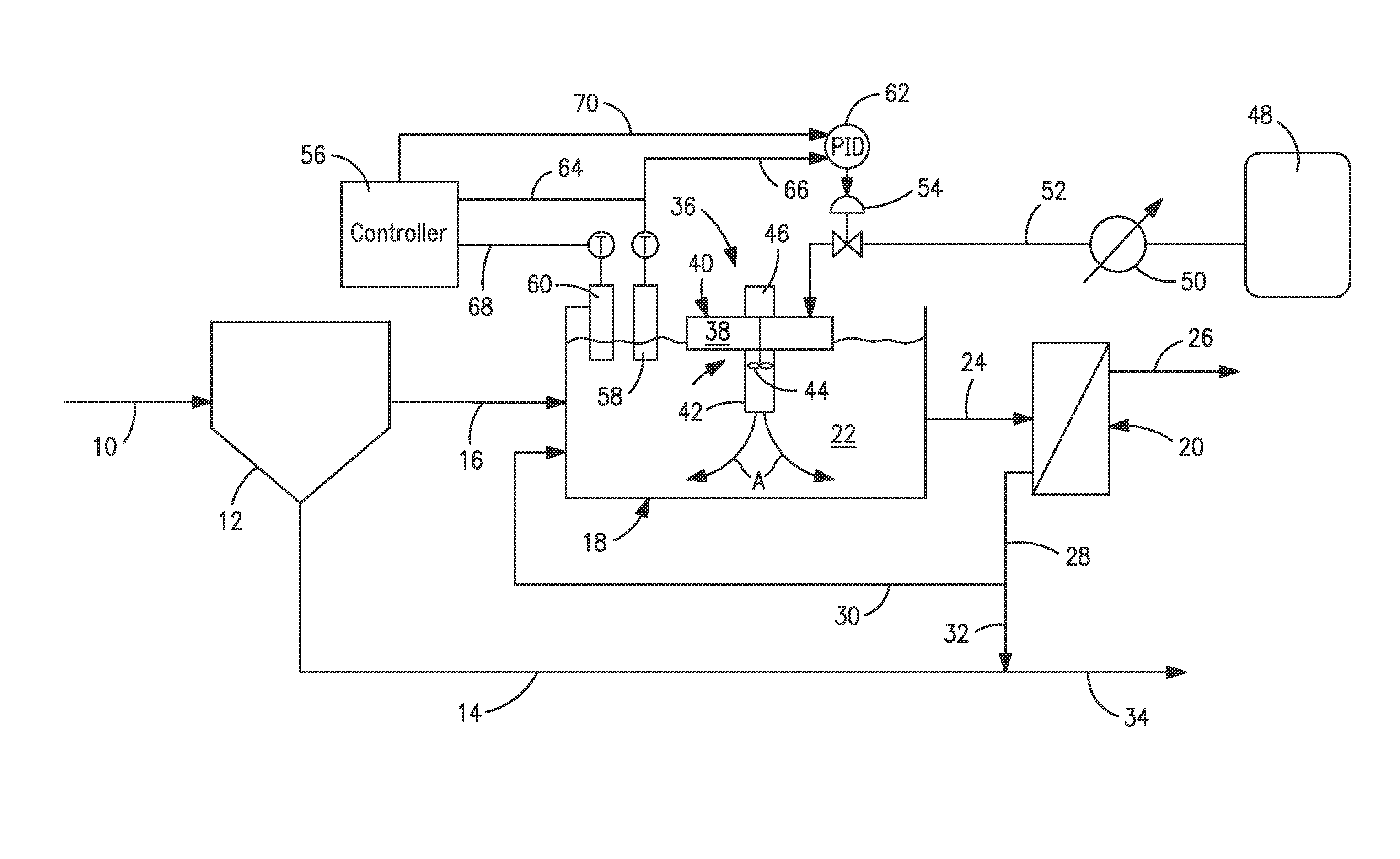Oxygen control system and method for wastewater treatment
a technology of oxygen control system and wastewater treatment, applied in the direction of multi-stage water/sewage treatment, filtration separation, separation process, etc., can solve the problems of increasing the frequency of cleaning required, increasing the energy consumed by the membrane, and limited level of suspended solids of mixed liquor, so as to reduce the fouling of the membrane
- Summary
- Abstract
- Description
- Claims
- Application Information
AI Technical Summary
Benefits of technology
Problems solved by technology
Method used
Image
Examples
Embodiment Construction
[0021]With reference to FIG. 1, a wastewater treatment facility 1 is illustrated in which an influent stream 10 is introduced into a primary clarifier 12 to allow separation between soluble organic materials, heavier and lighter solids. Such separation produces a primary sludge stream 14 containing the settled heavier solids. An effluent stream 16 from the primary clarifier 12 is introduced into a secondary treatment system having an aeration basin 18 and a membrane bioreactor 20. Microorganisms within the aeration basin 18 act to remove organic matter contained in mixed liquor 22 within the aeration basin 18. The treated effluent, as a stream 24, is introduced into the membrane bioreactor to separate microorganisms from the waste water and thereby produce a permeate effluent stream 26 and an activated sludge stream 28. The permeate effluent stream 26 can be discharged, or further processed in a tertiary system before being released into the environment. The activated sludge stream ...
PUM
| Property | Measurement | Unit |
|---|---|---|
| concentration | aaaaa | aaaaa |
| concentration | aaaaa | aaaaa |
| mass ratio | aaaaa | aaaaa |
Abstract
Description
Claims
Application Information
 Login to View More
Login to View More - R&D
- Intellectual Property
- Life Sciences
- Materials
- Tech Scout
- Unparalleled Data Quality
- Higher Quality Content
- 60% Fewer Hallucinations
Browse by: Latest US Patents, China's latest patents, Technical Efficacy Thesaurus, Application Domain, Technology Topic, Popular Technical Reports.
© 2025 PatSnap. All rights reserved.Legal|Privacy policy|Modern Slavery Act Transparency Statement|Sitemap|About US| Contact US: help@patsnap.com



